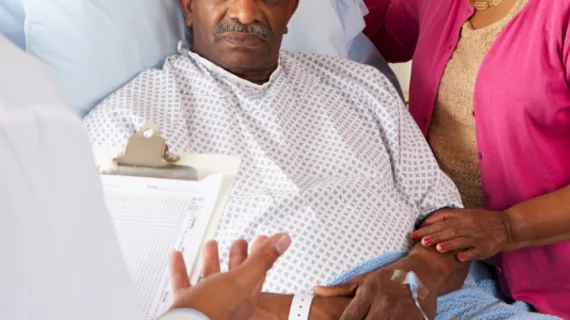Black Americans twice as likely to have 2nd intracerebral hemorrhage
Minorities, specifically blacks and Hispanics, are more than twice as likely to have a second intracerebral hemorrhage than their white counterparts, according to a new study published in Neurology on June 6.
“Previous studies have shown that black and Hispanic people are at greater risk of having a first bleeding stroke, but studies have not looked at ethnic and racial differences in recurrent intracerebral hemorrhage,” said lead author Alessandro Biffi, MD, of Massachusetts General Hospital (MGH) in Boston. “Since controlling high blood pressure is the main method of preventing second strokes and we know that there are racial and ethnic differences in the prevalence of high blood pressure and its severity, we really wanted to investigate these differences.”
The researchers combined the results from the longitudinal study and the Ethnic/Racial Variations of Intracerebral Hemorrhage (ERICH) that were conducted at MGH.
The study cohort consisted of 2,292 individuals—1,121 whites, 529 blacks, 605 Hispanics and 36 of other races and ethnicities—who had baseline blood pressure measurements taken and at least once every six months afterward.
Forty-one individuals in the cohort had previously exhibited an intracerebral hemorrhage before the start of the study.
More than 1,500 people were followed for a year in the ERICH study—the researchers found 23 people had another stroke, making the recurrence rate 1.5 percent. More than 750 in the longitudinal study were followed for about four years—the researchers found 75 people had another stroke, making the recurrence rate 3.9 percent.
The researchers stratified the results further by race, finding 1.7 percent of whites had second strokes, 6.6 percent of blacks had second strokes and 6.1 percent of Hispanics had second strokes.
The average systolic blood pressure was higher for blacks and Hispanics than for whites. After adjusting for the blood pressure differences, they found blacks were nearly twice as likely to have another stroke and Hispanics were about 50 percent more likely to have another stroke.
“The differences in blood pressure among these groups do not fully account for the differences in the risk of having another stroke,” Biffi said. “More research is needed to determine the factors behind this disparity.”

